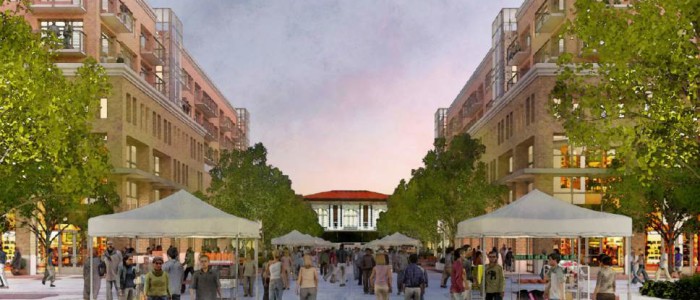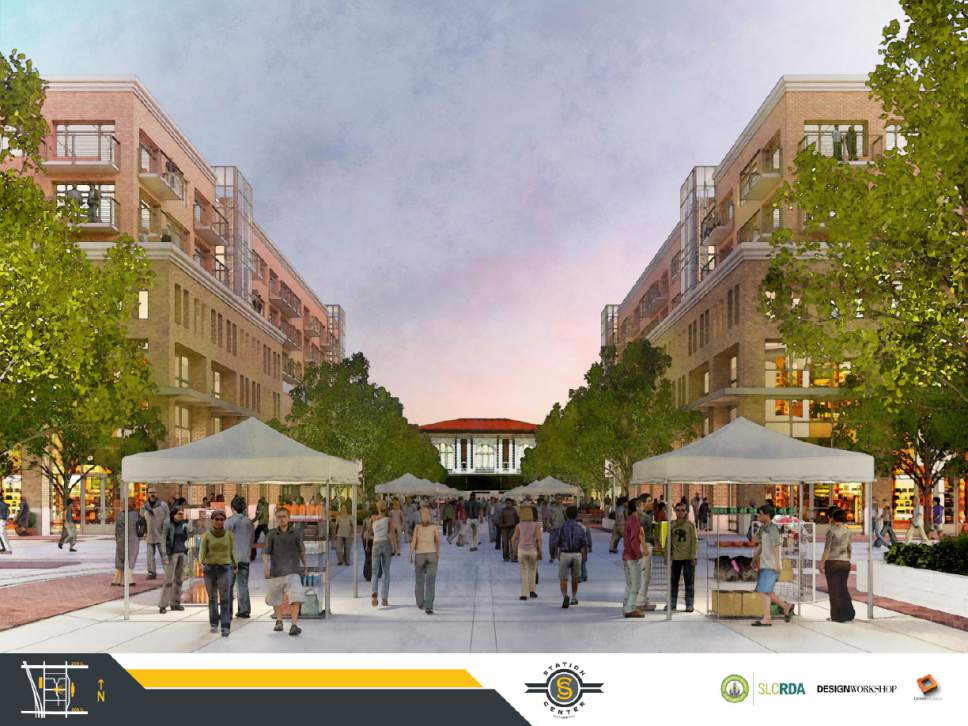Downtown Salt Lake City is on the rise. With new loft projects being built and old buildings being readapted into luxury condos, the face of downtown Salt Lake is rapidly transforming.
The latest urban renewal project in downtown Salt Lake is in the area from 200 South and 400 South and 500 West to 600 West and it will have a new name, Station Center.
To find out more, read this article from Tony Semerad, originally written in the Salt Lake Tribune or read his article here:
There isn’t much to see yet, but a major urban-renewal plan for Salt Lake City is set to bring hundreds of new apartments, shops, offices, green spaces and pedestrian-friendly festival streets to the disused western edge of downtown.
Utah’s capital officially embarks this week on one of its most ambitious attempts at community making in recent memory, with potential effects citywide. More than a decade in the works, the public mixed-use development of blighted land in the so-called Depot District advances Thursday on two key fronts.
City officials officially will dub the two-block overhaul — between 200 South and 400 South from 500 West to 600 West — Station Center. They will unveil a project logo as part of their well-vetted branding campaign tied to the site’s proximity to the Utah Transit Authority’s intermodal hub at Salt Lake Central Station.
The city’s Redevelopment Agency also will begin an eager courtship with the region’s private developers, hoping to lure some of them to do the work.
Over breakfast and lunch meetings Thursday at Rio Grande Depot, agency leaders will present details, maps and a list of potential enticements for turning nine acres of vacant land and old buildings into the city’s newest high-density urban neighborhood.
“We want to make it possible for private partners to succeed,” RDA Executive Director D.J. Baxter said. “We could never do it all, and we don’t want to do it all.”
As it shares its vision, the RDA is likely to have to allay concerns about the effects of the city’s homeless population on the fledgling Station Center neighborhood, with The Road Home shelter immediately adjacent and other shelters just blocks away.
While the nearby presence of homeless services is not perceived by most developers as an outright deal-breaker, “it remains an issue,” said John West, CEO of Cottonwood Partners, a Park City-based firm handling UTA’s expansion of its Central Station project.
He and others noted work was underway on resolving those issues — by a city commission and a group led by area business owners, known as the Pioneer Park Coalition.
The RDA’s pitch to developers, Baxter said, will highlight the probable safety benefits of bringing in thousands of new residents and pedestrians. But its main thrust will be the advantages of building on choice land close to downtown and centrally located for bus routes, light rail, FrontRunner and Amtrak.
“Our focus,” he said, “is really making sure this can be the premier opportunity for transit-oriented development in the state.”
As the city readied for Thursday’s events, Mayor Ralph Becker called Station Center “exciting” and “expansive.” He predicted the project “will have transformative impacts, leading to a new, vibrant, pedestrian-scale neighborhood right downtown.”
The RDA is initially opening five sites on its two-block Station Center footprint for proposals to gauge interest, in the first of three construction phases. Like the agency’s recent project in the Marmalade District west of Capitol Hill, each phase of Station Center involves a series of smaller components, a strategy designed to attract a variety of developers.
“It’s part of how you make an area like that look unique,” said Salt Lake City Councilman Stan Penfold, the RDA Board’s chairman.
“It avoids the Gateway syndrome,” he said, referring to the agency’s involvement in The Boyer Co.’s construction of The Gateway mall, “where it’s designed to look different but it really doesn’t.”
Beyond its promise of reviving an aging city sector, Penfold said, Station Center also will put into action a series of transit-oriented-design principles the city is deploying elsewhere, notably along 400 South and North Temple.
The Station Center plan calls for blending residential and commercial uses in clusters of top-quality buildings reaching up to nine stories high. The theme throughout: walkability.
Two historic structures — the old Serta Mattress and Beehive Brick buildings — will be renovated and put to modern use.





Comments are closed.